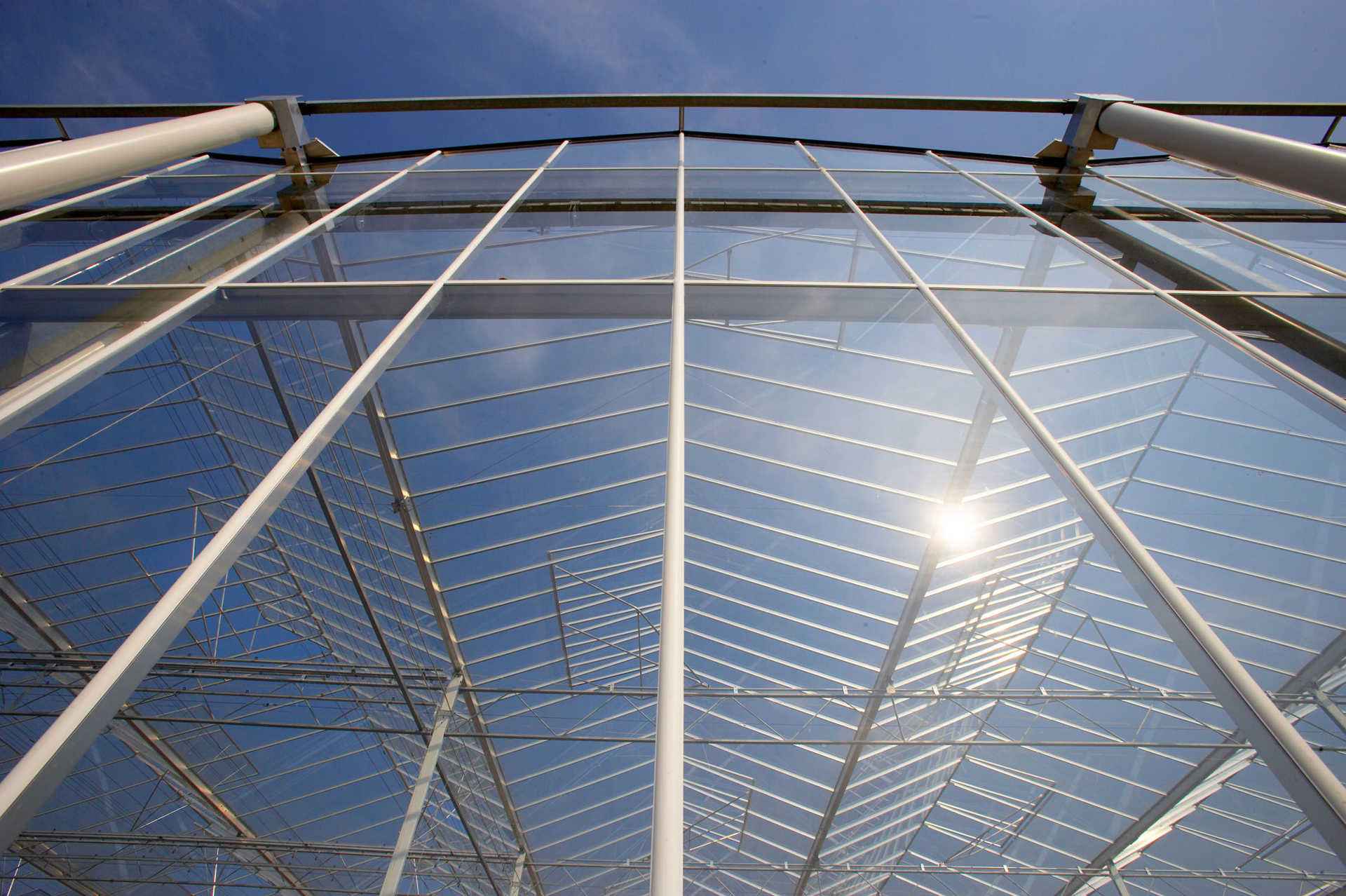Leaf Area Index (LAI)

Short definition
Leaf Area Index (LAI) is the ratio of total one-sided leaf area to ground area in a greenhouse canopy, and serves as a metric of canopy density that governs light interception.
Expanded definition
Leaf Area Index (LAI) is defined as the leaf area per unit ground area and is used in greenhouse radiation and growth models to estimate how much photosynthetically active radiation is intercepted by the canopy. It is a dynamic property that changes with crop development, pruning, training, and leaf angle distribution, which together govern light penetration to lower leaves and soil. In practice, LAI guides climate control decisions, including shade management, lighting schedules, and CO2 enrichment, because higher LAI increases canopy interception and transpiration demand, while excessive LAI can reduce light use efficiency and increase disease risk. Synonyms and abbreviations: LAI, leaf area per unit ground area, leaf area per m^2 ground area, leaf area index (LAI).
In Greenhouse Context
In practice, LAI matters operationally because it controls how much light the canopy intercepts and how energy is partitioned inside the greenhouse. As LAI increases, more PAR is captured by the upper leaves, which raises transpiration rates and cools leaves via evaporative cooling, but can also raise humidity in the canopy and create a microclimate conducive to disease if ventilation or cooling is insufficient. Growers therefore monitor LAI targets alongside temperature, humidity, and PAR to optimize light use, irrigation scheduling, and air exchanges. Measuring LAI can be done with indirect optical methods or by comparing above and below canopy PAR sensors; destructive leaf-area methods are used in trials but are less practical for daily control. These LAI-driven dynamics interact with extinction coefficients, leaf angle distribution, and canopy microclimate models to guide shading, CO2 enrichment, and venting strategies. LAI is not static; it evolves with crop age, pruning, and training, so climate control systems must adjust accordingly. The value informs plant-available light and photosynthetic capacity, and it is tightly linked to related metrics such as specific leaf area, leaf weight ratio, and canopy cover. Operators can implement automated strategies where LAI targets trigger adjustments to shade curtains, supplemental lighting duration, and CO2 dosing; such systems rely on psychrometric data (temperature, humidity, vapor pressure deficit) and PAR measurements to maintain a favorable microclimate while minimizing energy use. Understanding LAI in the context of crop physiology helps balance rapid canopy development with the risk of self-shading and reduced light use efficiency; sensors and controllers should be validated with periodic field checks and trials.
Examples and/or use cases
Tomato crops in a 2.0 ha greenhouse actively maintain an LAI around 3–4 by training and pruning to optimize light interception; A rose production facility targets LAI 3–4 and uses shading screens during peak sun to prevent excessive interception and humidity buildup; A bell pepper operation maintains LAI 5–7 through high-density planting and selective de-leafing to keep light distribution even and disease pressure manageable; A cucumber block uses indirect PAR measurements to estimate LAI and adjusts LED lighting duration to ensure daily assimilates meet production goals; A lettuce or leafy greens module tracks LAI dynamics to fine-tune CO2 dosing and ventilation schedules for tighter humidity control.
Relevance
LAI is a fundamental descriptor linking plant physiology to greenhouse climate control, informing psychrometric calculations, setpoints, and control algorithms by shaping canopy light absorption, transpiration demand, and internal microclimate. Accurate LAI management enables more precise modeling of photosynthetic assimilation in canopy radiation schemes and guides pruning and shading decisions to balance light capture with leaf health and disease risk. From an operational perspective, LAI supports energy efficiency through optimized shading, lighting, and ventilation strategies that respond to real canopy density rather than static targets. The concept also intersects with related metrics such as extinction coefficient, canopy reflectance, and light-use efficiency, highlighting the need for crop-specific LAI targets validated by field trials. Sources — Online: https://ceac.arizona.edu/sites/default/files/asae_-_heating_ventilating_and_cooling_greenhouses.pdf; https://msu-prod.dotcmscloud.com/floriculture/uploads/files/Section%20_3.pdf; https://extension.psu.edu/psychrometric-chart-use/.